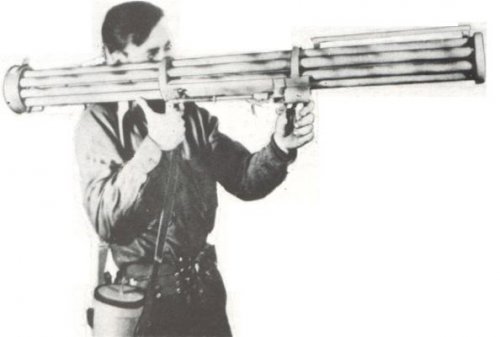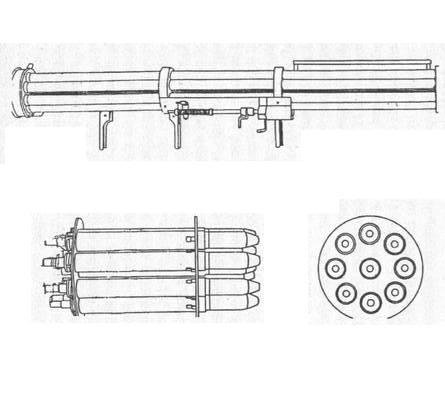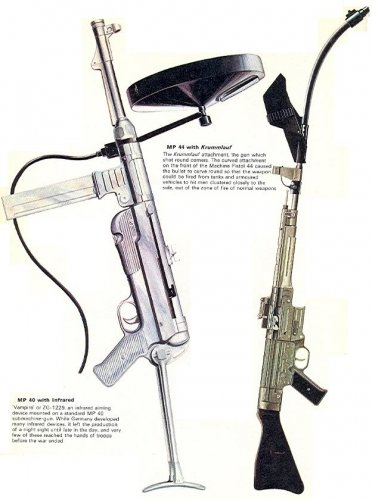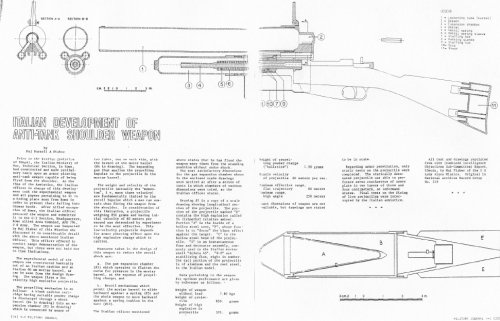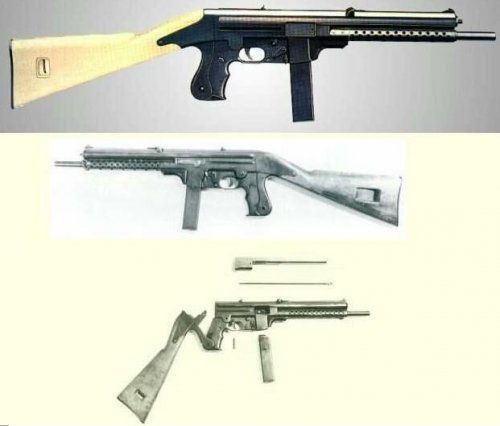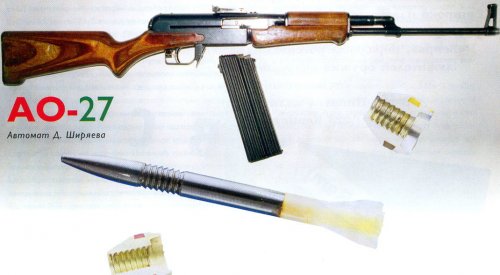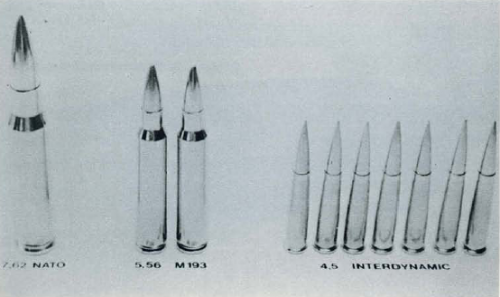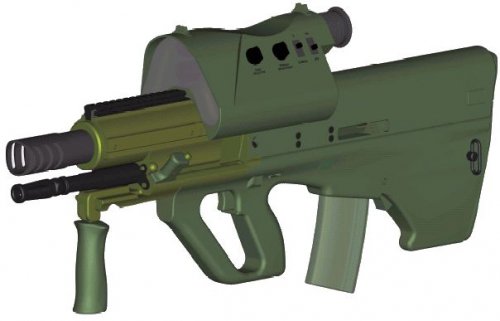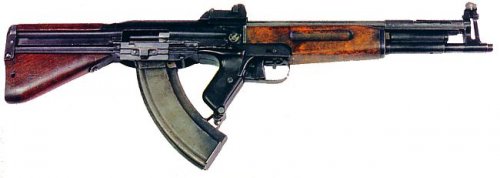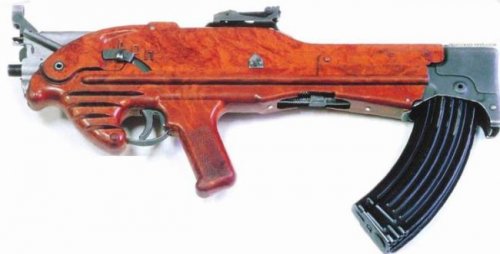Italian shoulder-fired anti-tank weapon from 1943. Uses high-low pressure system and a 70mm diameter barrel to fire a HEAT shell. More details in text. Unfortunately I don't have a higher res version.
ARMAGUERRA CREMONA OG44 from
here
In 1944, during the last months of World War 2, when northern Italy was occupied by the Nazi German troops and admininstrated by the pupeet-state of the RSI ("Repubblica Sociale Italiana", ITALIAN SOCIAL REPUBLIC, also known in Italy as the REPUBLIC OF SALO', the name taken from the small city which was the capitol of this "new country" actually a new fascist state ruled by Benito Mussolini), the italian engineer GIOVANNI OLIANI created an interesting "automatic muskeet" (this was the name given at that time in Italy to the "large-sized submachineguns") in 9x19mm-Parabellum caliber which several prototypes were built by the ARMAGUERRA plant located in the town of Cremona. It never entered mass production, however, due to both the end of WW-2 and to the massive concurrence of the well-known BERETTA products.
This weapon however represented a massive step forward respect to the WW2-era submachinegun technology, introducing the "slender frame: in fact, it was approximately configured in an "L" shape, which SHORTER part was the FACE of the weapon, including the striking pin in it; when firing, the weight of the LONGER part of the L-shape, and consequently the greatest part of the weapons' mass, "moved" towards the barrel, thus BALANCING it during sustained fully-automatic fire.
Such tehcnical engineering masterpiece has been later copied by others and most famous submachineguns, such as the italian FRANCHI LF57 and the german WALTHER MP-L.
The ARMAGUERRA OG-44 was gas-operated and selective-fire (with a Cyclic Rate of 500 Rounds Per Minute), it had ventilation holes on the handguard that were a consequence of the construction method, it was made by stampings from a single 1'5 Millimeters tick steel sheet. Fixed wooden buttstocks and folding metal stocks were both available.
According to the original project, the ARMAGUERRA OG-44 had to be fed by proprietary 25-rounds magazines, but, to accelerate an eventual adoption procedure by the Armed Forces, it was engineered to accept the widespread and well-known BERETTA 20, 30 and 40-rounders.
The ARMAGUERRA OG-44 had a 292 Millimeters long barrel, a 788 Millimeters total lenght and weighted 3'5 Kilograms when unloaded.

